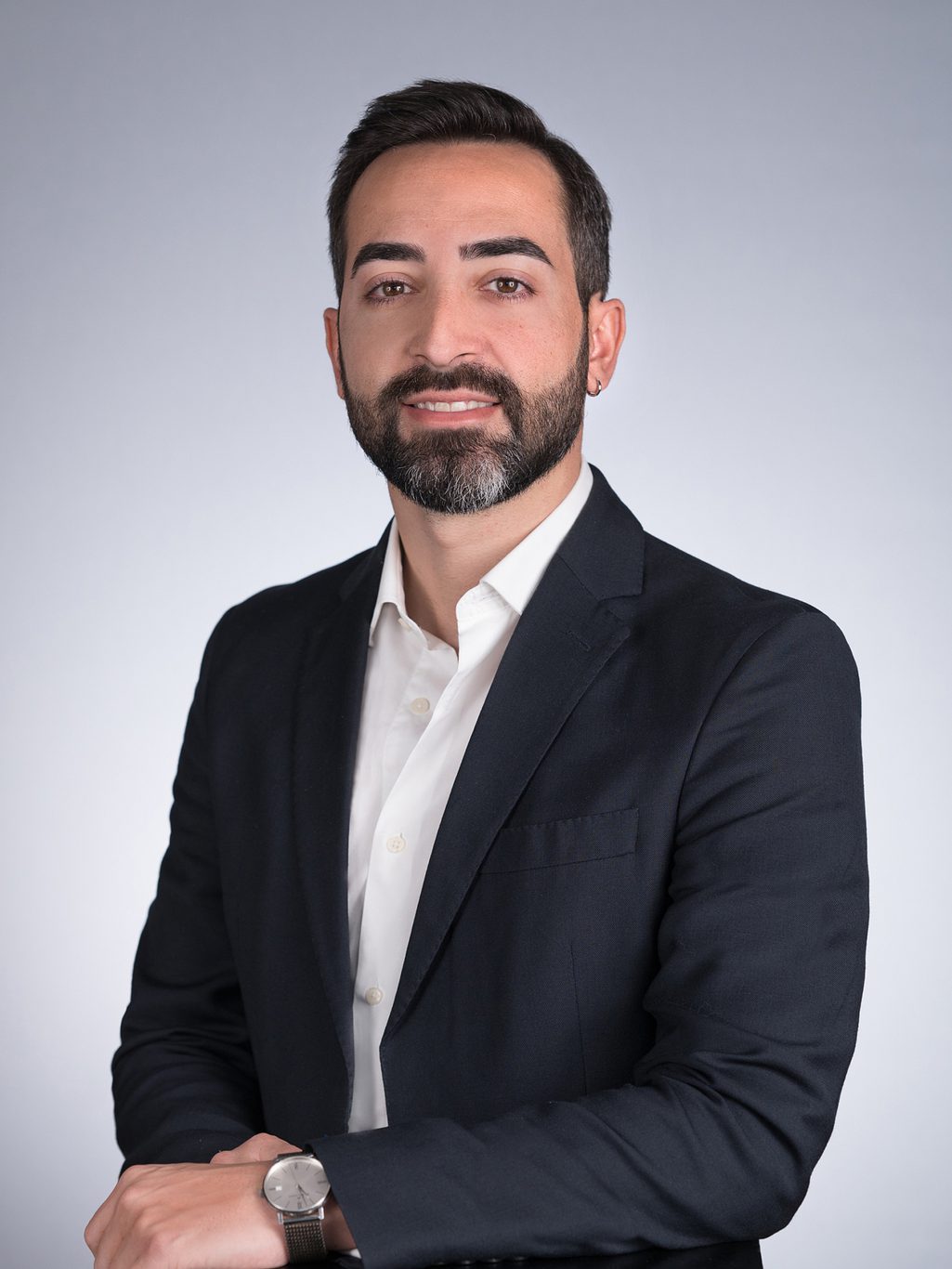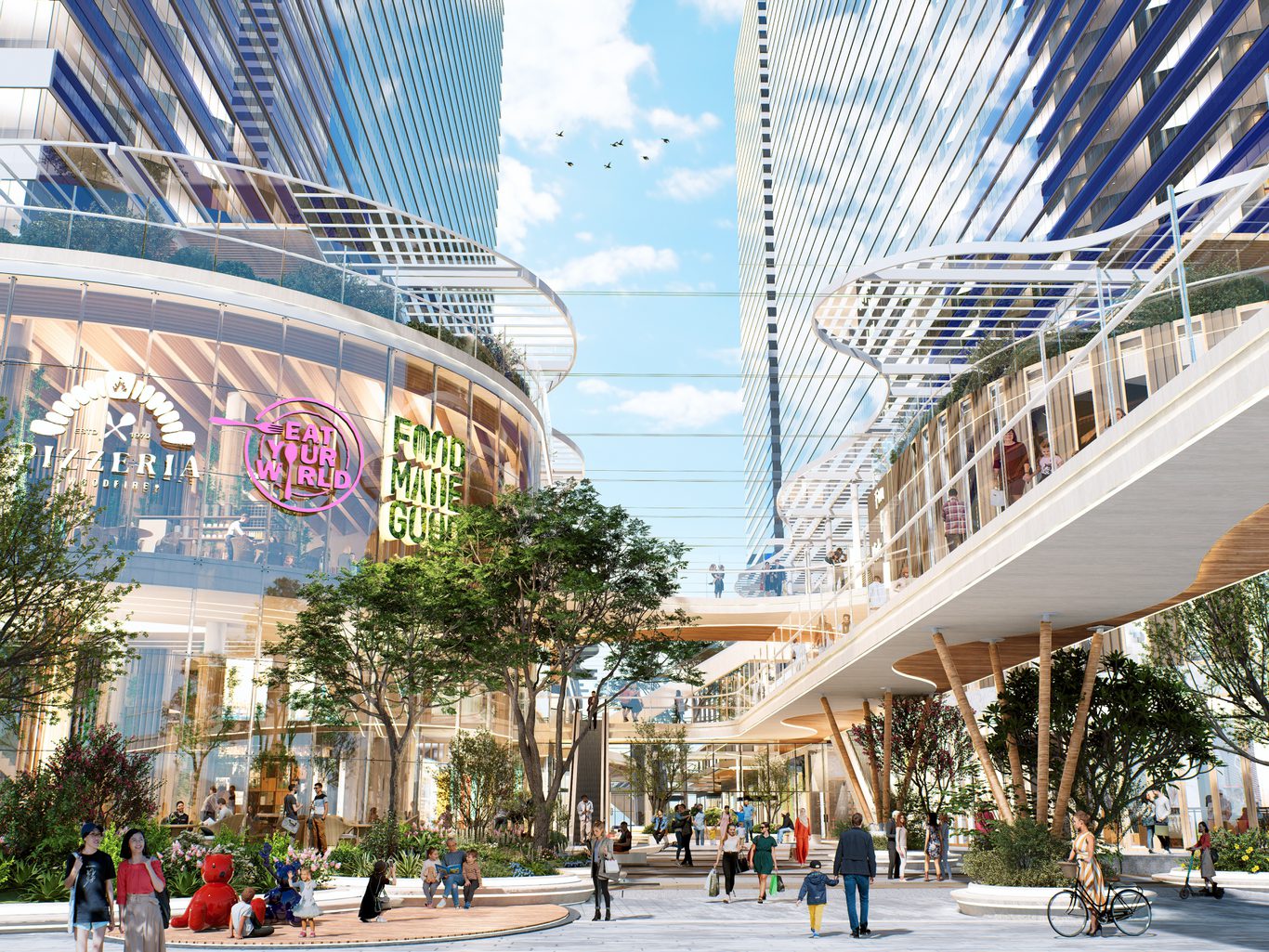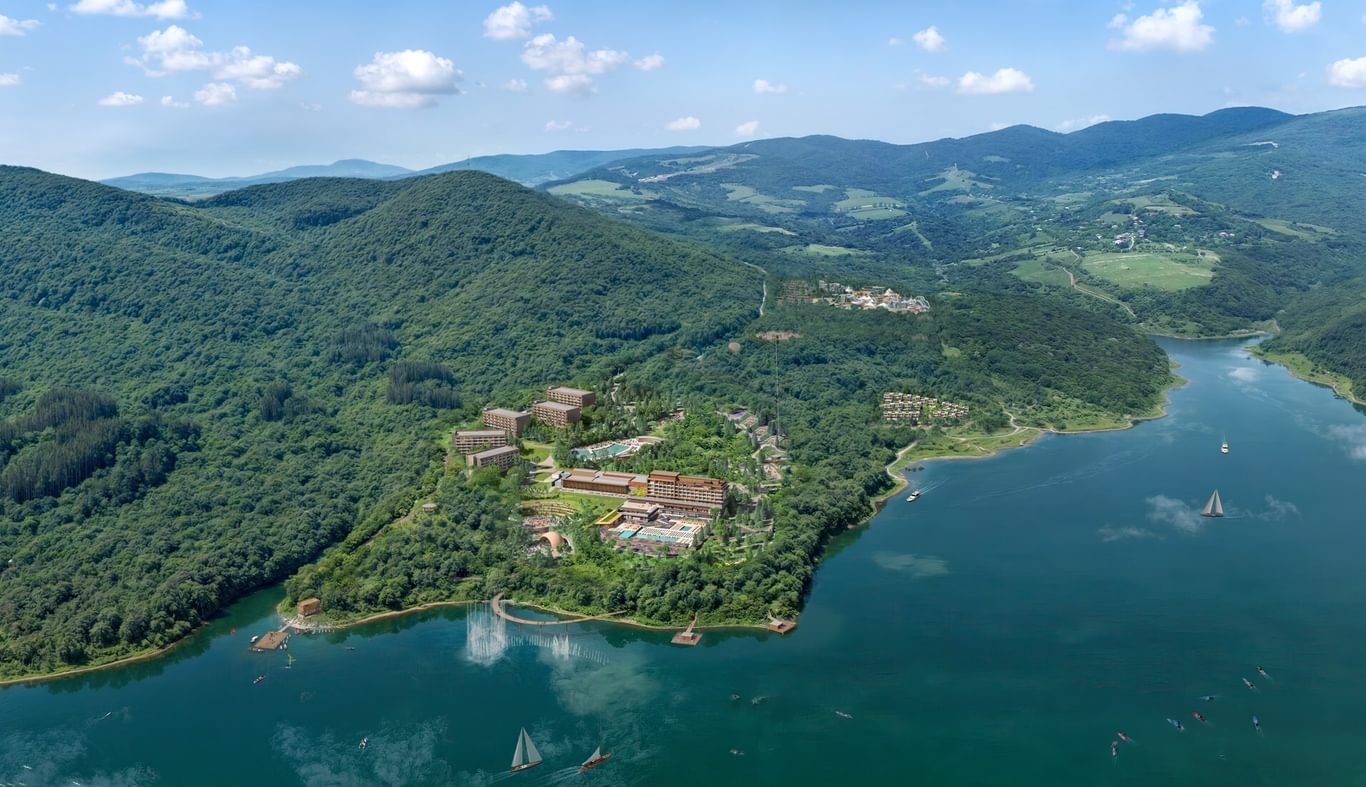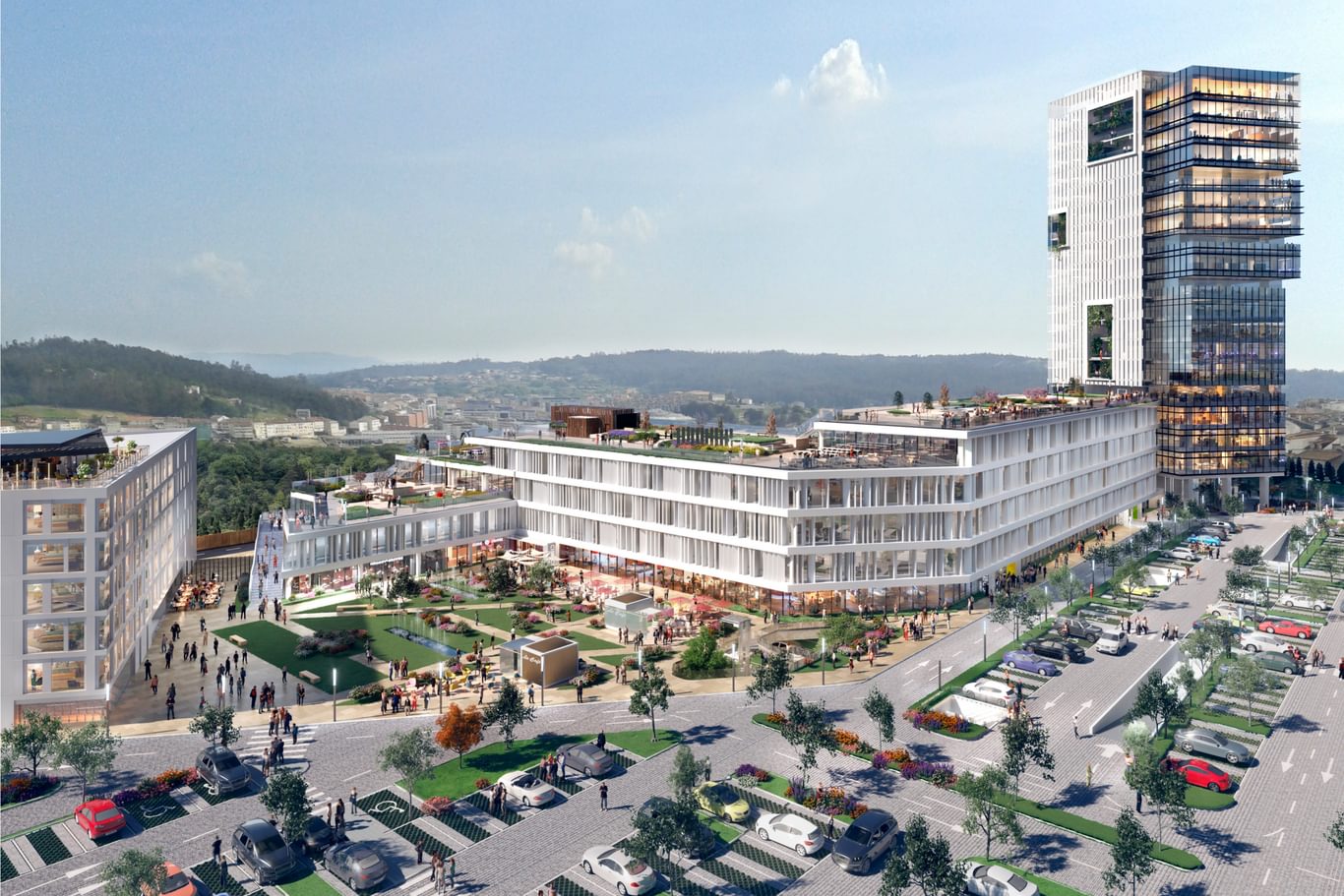
People profile: Alberto Muñoz on Culture, Collaboration, and Creating Meaningful Architecture
Alberto Muñoz is a talented architect and concept designer whose passion for construction and design began at an early age. Growing up in a family immersed in the building industry, Alberto developed a deep understanding of architecture as both a technical and creative discipline. Now based in Chapman Taylor’s Madrid studio, he brings a wealth of international experience and a people-centred approach to his work, contributing to a wide range of innovative projects across Europe, the Middle East, and Latin America. In this People Profile, Alberto reflects on the influences that shaped his architectural journey, the importance of cultural context in design, and his passion for creating spaces that enhance everyday life.
1. Can you tell me a bit about your early life and career?
I was born in Badajoz, a small city in the Extremadura region of Spain. My journey into architecture began early—I grew up in a family deeply involved in construction and design. My grandparents worked in construction, and my father runs a design-and-build company. From a young age, I spent time in his office, fascinated by the hand-drawn plans and scale models. I knew I wanted to be an obreador (builder) before I even knew the word "architect."
I studied architecture in Seville, spent a year in Kraków, Poland, and later moved to Madrid to complete a postgraduate degree in Research and Project Design. Along the way, I worked in Barcelona, Kraków, and Madrid, gaining diverse perspectives on architecture and construction. Before joining Chapman Taylor, I was also involved in designing modular housing as part of a humanitarian aid initiative following the earthquake in Ecuador.
Team sports, especially football, played a key role in shaping who I am. I started playing at an early age, including at international level, and the experience taught me valuable lessons in teamwork, resilience, leadership, and empathy—qualities that continue to influence how I approach both design and collaboration.
2. What insights from your early career did you bring to Chapman Taylor?
Growing up around construction sites and design studios gave me a grounded understanding of how architecture is built—not just how it’s drawn. That hands-on experience, combined with international exposure in cities like Kraków and Barcelona, helped me develop a pragmatic, flexible approach and a deep appreciation for how local culture and context shape architectural design.
I also bring a strong team mindset. Having learned early on the importance of collaboration—whether on the pitch or in the studio—I strive to foster synergy between disciplines, cultures, and client expectations.
3. What elements of design are particularly important to you?
For me, design is always about people. While aesthetics and form are important—and sometimes architecture needs to be iconic—I believe that function and user experience are paramount. Good design should improve lives, making spaces more intuitive, comfortable, and inspiring.
I’m also passionate about sustainability—not just in materials but in how spaces are used, adapted, and endure over time. Context is everything: a project in North Africa should never be designed the same as one in France or Latin America. Culture, climate, materials, and ways of living must inform every decision.
4. What interesting projects are you currently working on?
As part of the Concept Design team at Chapman Taylor’s Madrid studio, I work on the early design stages of a wide range of international projects. I’m currently involved in several mixed-use developments in Mexico, new retail and leisure schemes in Spain, masterplans in Abu Dhabi and Egypt (including Airport City in Jeddah and a residential development in New Cairo), as well as projects in Georgia such as Orbi City Mall and a lakeside hotel in Sioni.
In Portugal, I’ve been working on the redevelopment of the Alegro Alfragide shopping centre and the CINCO District in Lisbon. I’m also involved in a marina project in southern Spain.
Beyond design work, I’m part of Chapman Taylor’s global NextGen team, which looks at improving communication and knowledge-sharing across studios. I also take part in local initiatives such as “Empezando por el tejado”, which encourages internal collaboration and team-building, and I’m actively involved in the Madrid studio’s Business Development team.
What excites me most is the variety—jumping between regions, typologies, and client needs keeps the work dynamic, challenging, and deeply rewarding.
5. What’s the future direction for you and Chapman Taylor? What are you excited about?
I’m excited about continuing to grow as a designer—someone who understands both the big picture and the cultural nuance behind every project. I look forward to exploring new building typologies, integrating more sustainable strategies, and being part of international, multidisciplinary teams tackling complex design challenges.
For Chapman Taylor, I see a bright future in adaptive, people-centred design that responds to real human needs across borders. There’s so much to be gained from our global collaboration—from London to Madrid to Dubai—and I truly value that shared learning.
Personally, I aim to keep blending creativity with practicality—always designing with empathy, sensitivity to context, and a clear sense of purpose.
Now based in Chapman Taylor’s Madrid studio, he brings a wealth of international experience and a people-centred approach to his work, contributing to a wide range of innovative projects across Europe, the Middle East, and Latin America. In this People Profile, Alberto reflects on the influences that shaped his architectural journey, the importance of cultural context in design, and his passion for creating spaces that enhance everyday life.
Can you tell me a bit about your early life and career?
I was born in Badajoz, a small city in the Extremadura region of Spain. My journey into architecture began early—I grew up in a family deeply involved in construction and design. My grandparents worked in construction, and my father runs a design-and-build company. From a young age, I spent time in his office, fascinated by the hand-drawn plans and scale models. I knew I wanted to be an obreador (builder) before I even knew the word "architect."
I studied architecture in Seville, spent a year in Kraków, Poland, and later moved to Madrid to complete a postgraduate degree in Research and Project Design. Along the way, I worked in Barcelona, Kraków, and Madrid, gaining diverse perspectives on architecture and construction. Before joining Chapman Taylor, I was also involved in designing modular housing as part of a humanitarian aid initiative following the earthquake in Ecuador.
Team sports, especially football, played a key role in shaping who I am. I started playing at an early age, including at international level, and the experience taught me valuable lessons in teamwork, resilience, leadership, and empathy—qualities that continue to influence how I approach both design and collaboration.
What insights from your early career did you bring to Chapman Taylor?
Growing up around construction sites and design studios gave me a grounded understanding of how architecture is built—not just how it’s drawn. That hands-on experience, combined with international exposure in cities like Kraków and Barcelona, helped me develop a pragmatic, flexible approach and a deep appreciation for how local culture and context shape architectural design.
I also bring a strong team mindset. Having learned early on the importance of collaboration—whether on the pitch or in the studio—I strive to foster synergy between disciplines, cultures, and client expectations.
What elements of design are particularly important to you?
For me, design is always about people. While aesthetics and form are important—and sometimes architecture needs to be iconic—I believe that function and user experience are paramount. Good design should improve lives, making spaces more intuitive, comfortable, and inspiring.
I’m also passionate about sustainability—not just in materials but in how spaces are used, adapted, and endure over time. Context is everything: a project in North Africa should never be designed the same as one in France or Latin America. Culture, climate, materials, and ways of living must inform every decision.
What interesting projects are you currently working on?
As part of the Concept Design team at Chapman Taylor’s Madrid studio, I work on the early design stages of a wide range of international projects. I’m currently involved in several mixed-use developments in Mexico, new retail and leisure schemes in Spain, masterplans in Abu Dhabi and Egypt (including Airport City in Jeddah and a residential development in New Cairo), as well as projects in Georgia such as Orbi City Mall and a lakeside hotel in Sioni.
In Portugal, I’ve been working on the redevelopment of the Alegro Alfragide shopping centre and the CINCO District in Lisbon. I’m also involved in a marina project in southern Spain.
Beyond design work, I’m part of Chapman Taylor’s global NextGen team, which looks at improving communication and knowledge-sharing across studios. I also take part in local initiatives such as “Empezando por el tejado”, which encourages internal collaboration and team-building, and I’m actively involved in the Madrid studio’s Business Development team.
What excites me most is the variety—jumping between regions, typologies, and client needs keeps the work dynamic, challenging, and deeply rewarding.
What’s the future direction for you and Chapman Taylor? What are you excited about?
I’m excited about continuing to grow as a designer—someone who understands both the big picture and the cultural nuance behind every project. I look forward to exploring new building typologies, integrating more sustainable strategies, and being part of international, multidisciplinary teams tackling complex design challenges.
For Chapman Taylor, I see a bright future in adaptive, people-centred design that responds to real human needs across borders. There’s so much to be gained from our global collaboration—from London to Madrid to Dubai—and I truly value that shared learning.
Personally, I aim to keep blending creativity with practicality—always designing with empathy, sensitivity to context, and a clear sense of purpose.
I also bring a strong team mindset. Having learned early on the importance of collaboration—whether on the pitch or in the studio—I strive to foster synergy between disciplines, cultures, and client expectations.
What elements of design are particularly important to you?
For me, design is always about people. While aesthetics and form are important—and sometimes architecture needs to be iconic—I believe that function and user experience are paramount. Good design should improve lives, making spaces more intuitive, comfortable, and inspiring.
I’m also passionate about sustainability—not just in materials but in how spaces are used, adapted, and endure over time. Context is everything: a project in North Africa should never be designed the same as one in France or Latin America. Culture, climate, materials, and ways of living must inform every decision.
What interesting projects are you currently working on?
As part of the Concept Design team at Chapman Taylor’s Madrid studio, I work on the early design stages of a wide range of international projects. I’m currently involved in several mixed-use developments in Mexico, new retail and leisure schemes in Spain, masterplans in Abu Dhabi and Egypt (including Airport City in Jeddah and a residential development in New Cairo), as well as projects in Georgia such as Orbi City Mall and a lakeside hotel in Sioni.
In Portugal, I’ve been working on the redevelopment of the Alegro Alfragide shopping centre and the CINCO District in Lisbon. I’m also involved in a marina project in southern Spain.
Beyond design work, I’m part of Chapman Taylor’s global NextGen team, which looks at improving communication and knowledge-sharing across studios. I also take part in local initiatives such as “Empezando por el tejado”, which encourages internal collaboration and team-building, and I’m actively involved in the Madrid studio’s Business Development team.
What excites me most is the variety—jumping between regions, typologies, and client needs keeps the work dynamic, challenging, and deeply rewarding.
What’s the future direction for you and Chapman Taylor? What are you excited about?
I’m excited about continuing to grow as a designer—someone who understands both the big picture and the cultural nuance behind every project. I look forward to exploring new building typologies, integrating more sustainable strategies, and being part of international, multidisciplinary teams tackling complex design challenges.
For Chapman Taylor, I see a bright future in adaptive, people-centred design that responds to real human needs across borders. There’s so much to be gained from our global collaboration—from London to Madrid to Dubai—and I truly value that shared learning.
Personally, I aim to keep blending creativity with practicality—always designing with empathy, sensitivity to context, and a clear sense of purpose.
In Portugal, I’ve been working on the redevelopment of the Alegro Alfragide shopping centre and the CINCO District in Lisbon. I’m also involved in a marina project in southern Spain.
Beyond design work, I’m part of Chapman Taylor’s global NextGen team, which looks at improving communication and knowledge-sharing across studios. I also take part in local initiatives such as “Empezando por el tejado”, which encourages internal collaboration and team-building, and I’m actively involved in the Madrid studio’s Business Development team.
What excites me most is the variety—jumping between regions, typologies, and client needs keeps the work dynamic, challenging, and deeply rewarding.
What’s the future direction for you and Chapman Taylor? What are you excited about?
I’m excited about continuing to grow as a designer—someone who understands both the big picture and the cultural nuance behind every project. I look forward to exploring new building typologies, integrating more sustainable strategies, and being part of international, multidisciplinary teams tackling complex design challenges.
For Chapman Taylor, I see a bright future in adaptive, people-centred design that responds to real human needs across borders. There’s so much to be gained from our global collaboration—from London to Madrid to Dubai—and I truly value that shared learning.
Personally, I aim to keep blending creativity with practicality—always designing with empathy, sensitivity to context, and a clear sense of purpose.




